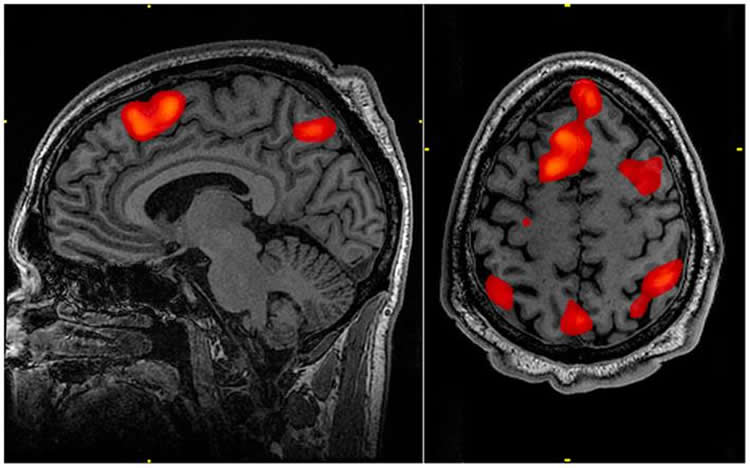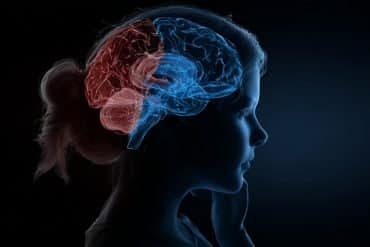Summary: Testing self-referential bias in working memory, researchers report people automatically self prioritize. This may form the basis for egocentric bias when it comes to decision making.
Source: Duke University
You’re in the middle of a conversation and suddenly turn away because you heard your name. Don’t worry, you aren’t rude.
Our minds automatically pull attention to our names in a crowded room and to our faces in photographs.
While this “cocktail party effect” of turning our attention toward self-related stimulation is well-known, scientists don’t know if something similar happens inside our heads. If a particular idea is associated with our selves, so we think about it faster than other thoughts? By testing for this “self-referential bias” in working memory, Duke researchers are starting to understand how our brains make us naturally self-centered.
Their work appears in the March 1 edition of Psychological Science.
“People prioritize themselves in their minds,” said senior author Tobias Egner, an associate professor in the Department of Psychology & Neuroscience. “The question is, how automatic is that prioritization? Is this something that you can’t help? If so, that could really bias how you make decisions.”
Working memory, sometimes called short-term memory, is “our interface with the world,” said Egner, who is also a member of the Duke Institute for Brain Sciences. In order to read this sentence, for example, your working memory holds each word in temporary storage for a few seconds until you reach the period. “We use working memory to make complex decisions where we have to weigh different pieces of information and keep them in mind,” Egner said. “If you always put self-related information first, then this bias could drive your decisions by weighting that information more strongly and outcompeting other things in your short-term memory when you evaluate different options.”
To test for self-referential bias in working memory, the research team, a collaboration between Duke University, the University of Bath in the U.K. and Southwest University in China and funded by Chinese government grants, created a computer program and tested it on 102 study participants.
First, participants learned to associate the colors blue, green and purple to labels of “friend,” “stranger” or “self” with a simple game. Then, two different-colored dots, like green and purple, would briefly flash on the screen. After a five-second pause, during which participants had to remember the locations and colors of the previous dots, a black dot would appear on screen. Participants then indicated if the black dot flashed in the same place as one of the colored dots, and if so, which label fit.
Participants correctly identified the “self”-labeled dots significantly faster than the “friend” or “stranger” dots. That meant their working memory focused on the dots labeled with the “self” color.
“Imagine you keep two things in mind,” Egner said. “If you’re being tested for either one of those, and you reliably answer one faster than the other, then you’re prioritizing it.”
“Even though it’s an arbitrary association of colors and locations that have nothing to do with you, and there’s no point in you prioritizing one over the other for doing well at the task, we reliably show across four experiments that you’re always faster to respond to the ‘self’-reference cue.”
In a variation of the experiment, the researchers made the “self”-labeled color appear half as often as the “stranger” or “friend” colors, to see if participants would still prioritize “self” even if it made them worse at the task.
“In spite of the fact that it would be much smarter for them to prioritize the other two, they are still faster with the ‘self’ color,” Egner said. “That really suggests that there’s automaticity there: we can’t help but prioritize the stimulus that’s associated with ourselves.”
Future research could include seeing if the effects hold with more difficult tasks, as almost all of the participants did each task correctly over the 80- to 100-minute trials.

They could test if people who prioritized “self” more than others make more selfish decisions, by pairing this experimental set-up with altruism experiments. Researchers could also find a “price” for this automatic selfishness, by paying participants different amounts for identifying “stranger” or “other” labels.
“You could differentially pay people for responding quickly to the different colors,” Egner said. “Then you could literally figure out how much more to pay for the ‘stranger’ color than the ‘self’ color to get the same performance speed.”
Funding: The study was supported the Chinese government.
Source:
Duke University
Media Contacts:
Karl Bates – Duke University
Image Source:
The image is credited to John Graner, Neuroimaging Department, Walter Reed National Military Medical Center.
Original Research:
“Automatic Prioritization of Self-Referential Stimuli in Working Memory,” Shouhang Yin, Jie Sui, yu-Chin Chiu, Antao Chen and Tobias Egner. Psychological Science, March 1, 2019. DOI:10.1177/0956797618818483
Abstract
Automatic Prioritization of Self-Referential Stimuli in Working Memory
People preferentially attend to external stimuli that are related to themselves compared with others. Whether a similar self-reference bias applies to internal representations, such as those maintained in working memory (WM), is presently unknown. We tested this possibility in four experiments, in which participants were first trained to associate social labels (self, friend, stranger) with arbitrary colors and then performed a delayed match-to-sample spatial WM task on color locations. Participants consistently responded fastest to WM probes at locations of self-associated colors (Experiments 1–4). This self-bias was driven not by differential exogenous attention during encoding or retrieval (Experiments 1 and 2) but by internal attentional prioritization of self-related representations during WM maintenance (Experiment 3). Moreover, self-prioritization in WM was nonstrategic, as this bias persisted even under conditions in which it hurt WM performance. These findings document an automatic prioritization of self-referential items in WM, which may form the basis of some egocentric biases in decision making.






